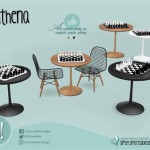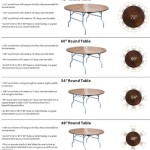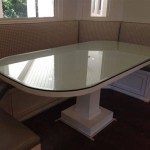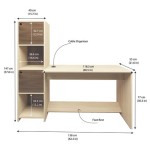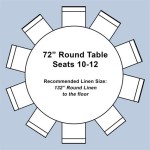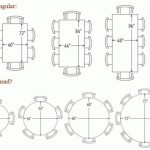Tabletop Book Display Stand: Enhancing Book Presentation and Accessibility
A tabletop book display stand is a specialized piece of equipment designed to showcase books on a level surface, such as a table, desk, or counter. These stands serve a variety of purposes, from highlighting specific titles in bookstores and libraries to providing convenient reading access for individuals at home or in educational settings. The design and functionality of these stands can vary significantly depending on the intended use, the size and weight of the books they are meant to support, and the desired aesthetic.
The construction materials used in tabletop book display stands also vary. Common materials include wood, metal, acrylic, and plastic. Wooden stands often offer a classic or rustic appearance, lending themselves well to environments such as libraries or personal study spaces. Metal stands provide durability and a more contemporary look, suitable for retail settings where a sleek design is preferred. Acrylic and plastic stands can offer transparency, allowing the book cover to be the primary visual focus, and are often lightweight and easy to clean. The choice of material significantly impacts the overall aesthetic and practical considerations such as weight capacity and ease of maintenance.
The effectiveness of a tabletop book display stand relies on its ability to attract attention to the displayed books and provide a comfortable and accessible viewing experience. Factors such as the angle of the display, the stability of the stand, and the clarity of the book cover presentation all contribute to its success. A well-designed stand can transform a simple book into an engaging point of interest, encouraging browsing and ultimately increasing sales or readership.
Key Point 1: Functions and Applications of Tabletop Book Display Stands
Tabletop book display stands are utilized in a diverse range of environments, each demanding specific features and design considerations. In bookstores, these stands are crucial for promoting new releases, highlighting special offers, and showcasing featured authors. They allow retailers to strategically position books at eye level, increasing visibility and impulse purchases. The stands can also be used to group books by genre, author, or theme, making it easier for customers to navigate the store's inventory.
Libraries also benefit significantly from the use of tabletop book display stands. Librarians use them to promote reading programs, display award-winning books, and highlight collections related to current events or seasonal themes. These stands can encourage patrons to discover new authors and genres, fostering a more engaged and informed community. In library settings, durability and stability are particularly important, as the stands are often subjected to high volumes of use.
Educational institutions, such as schools and universities, employ tabletop book display stands in classrooms, libraries, and resource centers. These stands facilitate access to textbooks, supplementary reading materials, and research resources. They can also be used to create engaging learning environments by displaying student work, showcasing relevant literature, and promoting reading initiatives. In these settings, stands that are adjustable and adaptable to different book sizes are highly valued.
Beyond commercial and institutional applications, tabletop book display stands are also popular for personal use. Individuals use them to showcase their favorite books on desks, bookshelves, or bedside tables. These stands can serve as both functional reading aids and decorative elements, enhancing the aesthetic of a room while providing convenient access to reading material. For personal use, the design and style of the stand are often prioritized, allowing individuals to choose a stand that complements their personal taste and décor.
Key Point 2: Design and Features: Factors to Consider
Several key design features contribute to the effectiveness of a tabletop book display stand. The angle of the display is a crucial factor, as it directly impacts the visibility of the book cover. An optimal angle allows the book to be viewed comfortably from a standing or seated position, maximizing its visual appeal. Some stands offer adjustable angles, providing greater flexibility and customization for different display scenarios.
The size and weight capacity of the stand are also important considerations. The stand must be able to accommodate the size and weight of the books it is intended to support without tipping or buckling. Heavier books, such as textbooks or art volumes, require more robust stands with reinforced construction. Conversely, smaller, lightweight books can be displayed on lighter, more minimalist stands.
The stability of the stand is paramount to ensure that the books remain securely in place. A stable stand prevents books from falling over, which can be disruptive, damaging, or even dangerous. Features such as non-slip feet, weighted bases, and sturdy construction contribute to overall stability. Stands designed for high-traffic areas require particularly robust stability features.
Additional features, such as page holders, bookmarks, and integrated lighting, can enhance the functionality of tabletop book display stands. Page holders keep the book open to a specific page, allowing for hands-free reading or display of key information. Bookmarks provide a convenient way to mark the reader's progress. Integrated lighting can illuminate the book, making it easier to read in low-light conditions and drawing attention to the display.
Key Point 3: Materials and Construction: Impact on Durability and Aesthetics
The choice of material significantly impacts the durability, aesthetics, and overall functionality of a tabletop book display stand. Wood offers a classic and warm aesthetic, making it suitable for libraries, home offices, and bookstores aiming for a traditional feel. Wooden stands can be crafted from various types of wood, each offering different levels of durability and visual appeal. Hardwoods, such as oak and maple, are more durable and resistant to wear and tear than softwoods, such as pine.
Metal stands provide a contemporary and industrial look, often preferred in retail settings and modern interiors. Metal stands are typically constructed from steel, aluminum, or iron, each offering different levels of strength and corrosion resistance. Steel is a strong and durable option, while aluminum is lightweight and corrosion-resistant. Metal stands can be finished with powder coating or paint to enhance their aesthetic appeal and protect them from scratches and rust.
Acrylic and plastic stands offer transparency and versatility, allowing the book cover to be the primary visual focus. These materials are lightweight, easy to clean, and relatively inexpensive. Acrylic stands are typically more durable and scratch-resistant than plastic stands. Both acrylic and plastic can be molded into various shapes and sizes, allowing for creative and innovative designs. These stands are often used in retail settings to highlight specific titles or create eye-catching displays.
The construction methods used in creating tabletop book display stands also influence their durability and stability. Stands with reinforced joints, sturdy bases, and high-quality hardware are more likely to withstand the rigors of daily use. Careful attention to detail during the manufacturing process ensures that the stand is level, stable, and free from defects that could compromise its functionality. The quality of the construction is a key indicator of the stand's overall value and longevity. Considerations such as ease of assembly and maintenance also contribute to the user experience and overall satisfaction.
In summary, the tabletop book display stand is a versatile tool that enhances book presentation and accessibility across a range of environments. Its design, features, and materials are carefully considered to optimize functionality, durability, and aesthetic appeal.

Wood Book Display Stand 3 Tier Countertop Author Events Signings Retail

Interesting Assembled Wood 4 Tier Table Top Book Brochure Display Rack China Stand Made In Com

Table Top Book Shelf Wooden Display Tabletop Stand Rack Portable Bookshelf Desktop
Tabletop Bookshelf Furniture Scholastic Book Clubs

White Black 6 Tier Tabletop Book Rack Table Top Display Stand

Desktop Bookshelf Wood Desk Organizer Shelf Bookcase With 5 Compartments Storage Shelves For Tabletop Books Holder Stand A4 A5 Paper File Mail Sorter Decor Display Rack In Home Office Black

23 Vintage Red Wood Book Stand Or Wall Shelf Unique Tabletop Holder For 1 Row Of Books Kitchen Desk Reading

Portable And Foldable Bamboo Book Stand For Tabletop Display Ipad Holder China Shelf Rack Made In Com

The Book Stand Stands Display Coffee Table Books

20 Diy Book Stand Ideas To Hold Books While Reading Cooking
Related Posts

